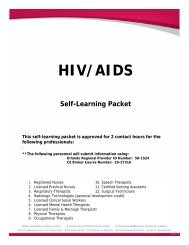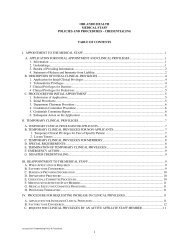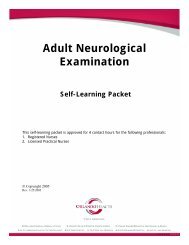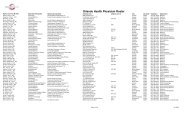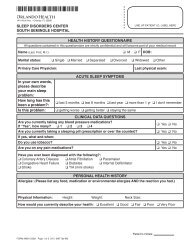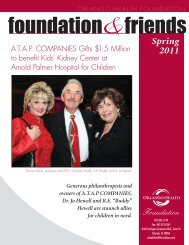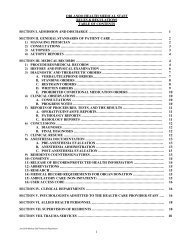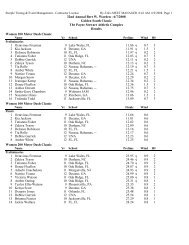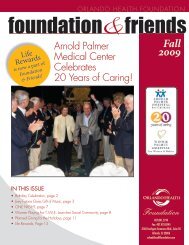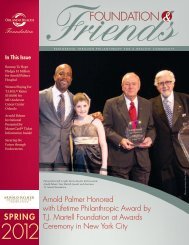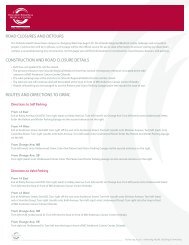Introduction to CV Pharmacology - Orlando Health
Introduction to CV Pharmacology - Orlando Health
Introduction to CV Pharmacology - Orlando Health
Create successful ePaper yourself
Turn your PDF publications into a flip-book with our unique Google optimized e-Paper software.
<strong>CV</strong> <strong>Pharmacology</strong><br />
Au<strong>to</strong>nomic Cardiovascular Innervation<br />
In order <strong>to</strong> have a better understanding of how cardiovascular drugs work, a brief review of how<br />
the heart and circulation are regulated by the au<strong>to</strong>nomic nervous system is needed. The<br />
au<strong>to</strong>nomic nervous system is composed of two branches; the sympathetic nervous system (SNS)<br />
and the parasympathetic nervous system (PNS). The SNS and the PNS normally work <strong>to</strong>gether<br />
<strong>to</strong> help maintain homeostasis in the body, including the cardiovascular system.<br />
The fibers of the sympathetic nervous system affect the organs and tissues in which they are<br />
located in by releasing norepinephrine (noradrenalin). These fibers are known as adrenergic<br />
fibers in reference <strong>to</strong> their relationship <strong>to</strong> norepinephrine.<br />
Some drugs are known as sympathomimetics because they mime or mimic the actions of the<br />
sympathetic nervous system. These drugs may also be known as adrenergic agents because they<br />
have the effects that stimulate the adrenergic fibers.<br />
The sympathetic nervous system innervates all chambers of the heart. Sympathetic stimulation<br />
(the “fight or flight” response) results in peripheral vasoconstriction, an increase in heart rate,<br />
faster speed of electrical impulses conducted through the heart (conductivity), and an increase in<br />
the strength with which the heart pumps blood (contractility).<br />
While fibers of the parasympathetic nervous system do exist in both the atria and the ventricles,<br />
they have a pronounced effect on the atria, while causing a minimal effect on the ventricles. The<br />
fibers of the parasympathetic nervous system affect the organs and tissues that they innervate by<br />
releasing acetylcholine. These fibers are known as cholinergic fibers in reference <strong>to</strong> their<br />
relationship <strong>to</strong> acetylcholine. Parasympathetic stimulation results in a decrease in heart rate, a<br />
slowing of electrical conduction through the AV node, and a mild decrease in the pumping action<br />
of the ventricles.<br />
Properties of Cardiac Cells<br />
Au<strong>to</strong>maticity is the ability of the cardiac pacemaker cells <strong>to</strong> spontaneously initiate an electrical<br />
impulse without being stimulated from another source such as a nerve.<br />
Excitability is the ability of the cardiac cells <strong>to</strong> respond <strong>to</strong> an external stimulus, such as from a<br />
chemical, mechanical, or electrical source.<br />
Conductivity is the ability of the cardiac cell <strong>to</strong> receive an electrical stimulus and conduct the<br />
impulse <strong>to</strong> another cardiac cell. The conduction can be altered by fac<strong>to</strong>rs such as sympathetic or<br />
parasympathetic stimulation, cardiac muscle damage, electrolyte imbalances and medications.<br />
Contractility is the ability of the cardiac cell <strong>to</strong> contract in response <strong>to</strong> an electrical stimulus.<br />
2010 <strong>Orlando</strong> <strong>Health</strong>, Education & Development 5



